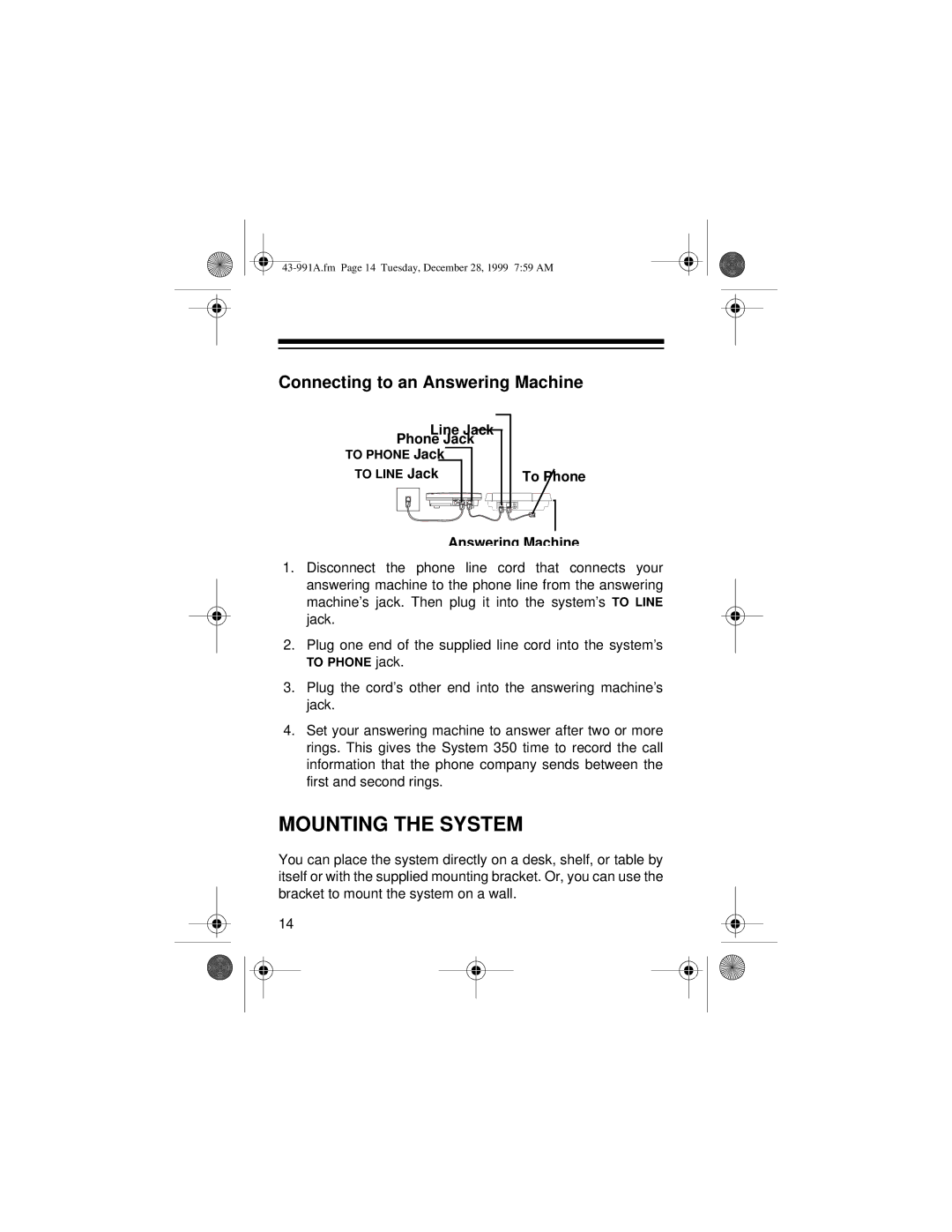System 350 specifications
The Radio Shack System 350, introduced in the mid-1980s, represents a significant milestone in personal computing, combining a blend of innovative features, robust technology, and user-friendly characteristics. Designed primarily for educational and business applications, the System 350 marked a notable entry point for many users into the world of computing.One of the standout features of the System 350 was its use of MS-DOS, an operating system that provided a familiar interface for a multitude of software applications. This characteristic allowed it to run a wide range of productivity tools, from word processors to spreadsheet programs, greatly enhancing its appeal to both students and professionals.
The System 350 was powered by an Intel 8088 microprocessor, which operated at a speed of 4.77 MHz. This architecture provided sufficient processing power for its target applications, enabling users to execute tasks efficiently within the confines of its pre-DOS graphical interface.
Memory capacity was another defining aspect. The base model typically came with 64 KB of RAM, expandable up to 640 KB, allowing users to store data and run larger programs. Storage needs were met by a 5.25-inch floppy disk drive, which became a standard for software distribution in that era, supporting the storage of files and applications.
In terms of display, the System 350 typically featured a CGA-compatible monitor that supported a resolution of 640 x 200 pixels in color mode. This allowed users to operate graphical applications while still maintaining clarity and readability on the screen.
The machine was equipped with several expansion slots, facilitating upgrades and hardware enhancements, which included additional memory and even improved graphics capabilities. This expandability made the System 350 a flexible option for users looking to adapt their system to evolving technological needs.
Connectivity options were also notable, supporting connections to printers and modems. This capability empowered users to print documents and communicate electronically, establishing a foundational way for early personal computers to interface with other devices.
In summary, the Radio Shack System 350 was a pioneering personal computer featuring an MS-DOS operating system, powered by an Intel 8088 processor. Its expandable memory, floppy disk storage, CGA display, and connectivity options positioned it as an accessible and versatile tool for both educational and business environments. As technology continued to evolve, the System 350 played a vital role in the personal computing revolution of its time.

